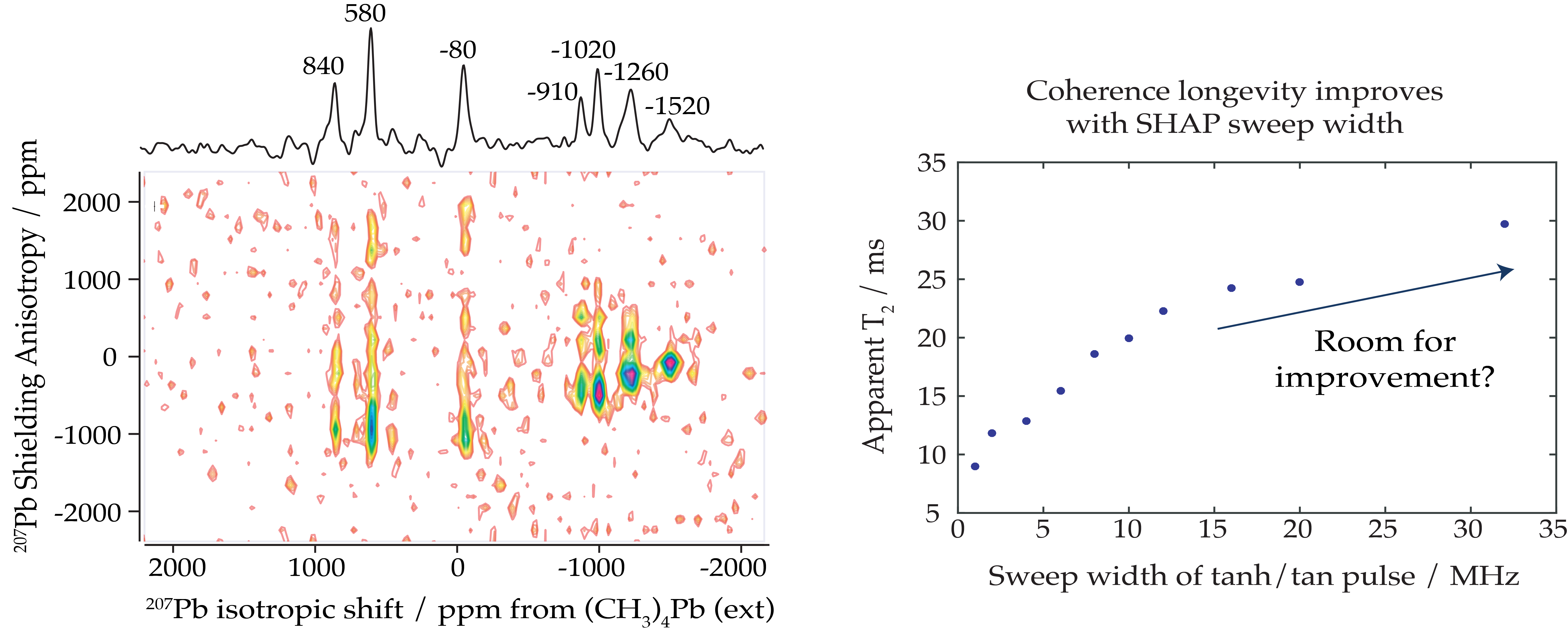207Pb NMR of Perovskite Ferroelectrics at Variable Temperatures using Frequency-Swept Pulses
Ferroelectric materials exhibit spontaneous electric polarization along a crystallographic axis where the direction and strength of the spontaneous electric field is dependent on the structure and composition of the material. The bulk piezoelectric and ferroelectric properties of these materials make them useful for applications in optics, microelectronics and additionally fundamental physics applications where lead ferroelectrics have been proposed for a search of a P,T-violating Schiff moment of the 207Pb nucleus [1]. The properties of these materials depend strongly on microscopic displacements of the metal cations within the material. As has been demonstrated in the past [2], 207Pb NMR yields information about the structure and magnetic anisotropy of lead sites in ferroelectric materials. These experiments are often challenging due to a combination of chemical and positional disorder present in these materials which leads to broadened and low-resolution NMR spectra. As such, exciting the full magnetic resonance bandwidth requires proper implementation of broadband pulses [3].

Using short, high-power adiabatic pulses (SHAP) [4] in combination with state-of-the-art NMR pulse sequences [5, 6] we investigate changes in the chemical shift anisotropy (CSA) parameters and spin relaxation behaviour at 207Pb sites in three ferroelectric materials: PbTiO3, Pb5Ge3O11 and PMN-PT. We observe the first site resolved spectra of Pb5Ge3O11 and we measure a T2' for PbTiO3 that is one order of magnitude longer than previously reported [7]. We present variable temperature 207Pb NMR data and discuss how changes in the NMR spectra relate to changes in the local and bulk structure of these materials.
[1] D. Budker, S. K. Lamoreaux, A. O. Sushkov and O. P. Sushkov, Physical Review A, 2006, 73, 022107.
[2] D. H. Zhou, G. L. Hoatson, R. L. Vold and F. Fayon, Physical Review B, 2004, 69, 134104.
[3] A. J. Pell and G. Pintacuda, Progress in Nuclear Magnetic Resonance Spectroscopy, 2015, 84, 33-72.
[4] G. Kervern, G. Pintacuda and L. Emsley, Chemical Physics Letters, 2007, 435, 147-162.
[5] B. J. Walder, K. K. Dey, D. C. Kaseman, J. H. Baltisberger and P. J. Grandinetti, The Journal of Chemical Physics, 2013, 138, 174203.
[6] S. L. Gann, J. H. Baltisberger and A. Pines, Chemical Physics Letters, 1993, 210, 405-410.
[7] L. S. Bouchard, A. O. Sushkov, D. Budker, J. J. Ford and A. S. Lipton, Physical Review A, 2008, 77, 022102.